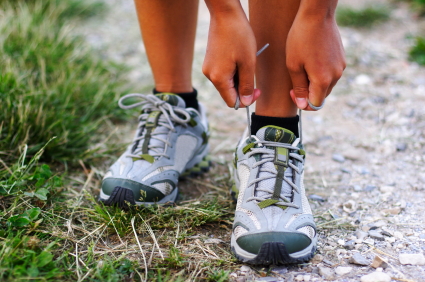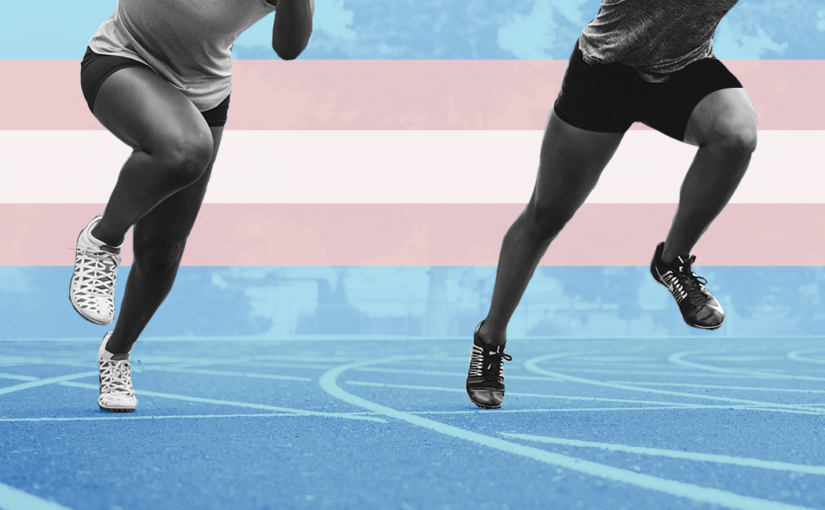Helping your athletes choose proper shoes
I thought I knew a lot about running. I had been a competitive distance runner on the national level for many years. So, when I was asked to work at a specialty running store, I figured it was a perfect fit.
It was there that I learned how to analyze a runner’s gait and fit them with proper shoes. It was also there that I had two stunning realizations. First, people have no clue how important their feet are. Second, no one knows how to pick the right running shoe for his or her foot type. I can’t blame them — I hadn’t a clue until I started working there.

Luckily, my shoe guesses over the previous nine years didn’t cause me serious injuries. I can remember a few times, however, when I was sidelined for several days because of minor discomfort and pain. When I think of the shoes I was wearing during those times, it all makes sense. The shoes were the cause of my pain.
Having your athletes find the proper running shoe is vital, whether they’re primarily runners or are running as a way to cross train for their main sport. It not only makes the miles more comfortable, but it also helps prevent unwanted injuries. The feet take on a lot of stress. This stress creeps up to the ankles, shins, knees and lower back. Wearing proper shoes creates balance in the feet, which keeps the rest of the body feeling good.
It’s best to stop by the local specialty running store for a professional gait analysis if possible for your athletes. Workers there are professionally trained and have the equipment to perform the best analysis possible.
In the meantime, here are some tips to get started.
Foot types
There are three different types of feet:
1. Under-pronating (also called supinators). Feet that under-pronate roll outward during the gait cycle. Only a small percentage of the population fits into this category.
2. Neutral. Neutral feet stand tall through the gait cycle. There is no inward or outward roll of the ankle or Achilles when walking or running.
3. Over-pronating. Feet that over-pronate have an inward roll of the ankle, Achilles or arch when walking or running. Most people (about 70 percent of the population) fit in this category. There are varying degrees of over-pronation. Some slightly to moderately over-pronate. Others severely over-pronate.
Those who severely over-pronate typically have very flat feet or flexible ankles. It’s easy to notice a severe over-pronator when you see one. Many times, the inward roll is so severe it looks like their ankles are going to touch the ground.
Find your foot type
To have your athletes determine their foot type, have them grab a teammate or coach. This person stands behind the athlete, who has rolled his or her pants up to mid-calf and starts walking.
 The teammate or coach watches the ankles, Achilles and arches as the athlete walks away. How do your feet look? Which of the previous three examples do they look like?
The teammate or coach watches the ankles, Achilles and arches as the athlete walks away. How do your feet look? Which of the previous three examples do they look like?
Shoe types
There are three types of running shoes: neutral, stability and motion control. They vary in levels of support to accommodate the different types of feet. The goal of any shoe is to help bring the runner to a neutral stance.
1. Neutral shoes offer no support. White foam, which is used for cushioning, is wrapped around the entire bottom (if you see any other block of color, it is not a neutral shoe). This type is best for under-pronators and neutral foot types, because it allows their naturally aligned foot to move freely.
2. Stability shoes offer support. The support comes from a piece of gray foam found the inside heel and arch area. The gray piece is dense foam that prevents the foot from fully rotating inward. It’s strong enough to keep the foot at a neutral stance through the gait cycle. This shoe is best for moderate over-pronators. Most people fall into this category.
3. Motion control shoes offer high support. These shoes have a very thick piece of the gray, dense foam in the arch and heel area. The amount of dense foam (sometimes coupled with a piece of plastic) causes the shoe to weigh more than neutral and stability shoes. People with very flat feet who severely over-pronate need this type of shoe to hold up their flexible ankles and flat arches.
The saying more is better is definitely not true when it comes to running shoes. If you have a neutral foot, it’s harmful to use a stability or motion control shoe. Neutral feet do not require the support those shoes offer.
Likewise, if an athlete moderately over-pronates, don’t have that person jump in a motion control shoe. This also offers far too much support. Both shoes, in this case, are over-correcting the problem. This leads to a whole set of unwanted issues. So, embrace your foot type (it’s genetic, so it isn’t going anywhere)!
Test the shoes
The next step is to give the shoe a test. After putting the shoes on, have a teammate or coach follow the athlete once again. If they see the Achilles standing tall with no inner rotation of the ankle, you have found the proper shoe. If the ankles still are rotating inward, repeat the process using a more supportive shoe.
Don’t forget about comfort. A shoe that corrects foot rotation but is uncomfortable doesn’t do your athlete any good. Try out a few different brands within the support category. Shoes vary in weight, shape and amount of cushion, all of which are important specs to consider.
Make sure the right size is chosen. When exercising, blood is pumped to the feet causing them to swell. If shoes are too small or tied too tightly, the runner may experience black toenails, tingly toes or a burning sensation in the bottom of the feet. The shoe must give the toes wiggle room. There needs to be about a nails width of space between the longest toe and the end of the shoe. This extra room accommodates for natural swelling.
Finish line
A pair of shoes provides runners 400 to 600 miles, or up to six months of wonderful running bliss. After hitting that mark, the shoe loses its cushion. This means the body is absorbing the shock of each step, putting your athlete at risk for potential injury.
One thought on “Helping your athletes choose proper shoes”
Leave a Reply
You must be logged in to post a comment.






How about foot strikers, heel runners, toe runners, etc. i believe that you tried to be too succinct and somewhat missed the boat with your simplicity. shoes, gait, running style, surfaces, past and current injuries all need to be addressed to get a proper shoe. hence, that is why it is important to go to a store that knows OR you need to know your style of running, intimately, and get the shoe that addresses your mechanics.
as a health education/personal training studio we address these issues with our clients and many times with escort the client to the retailer to ensure proper fit and performance.